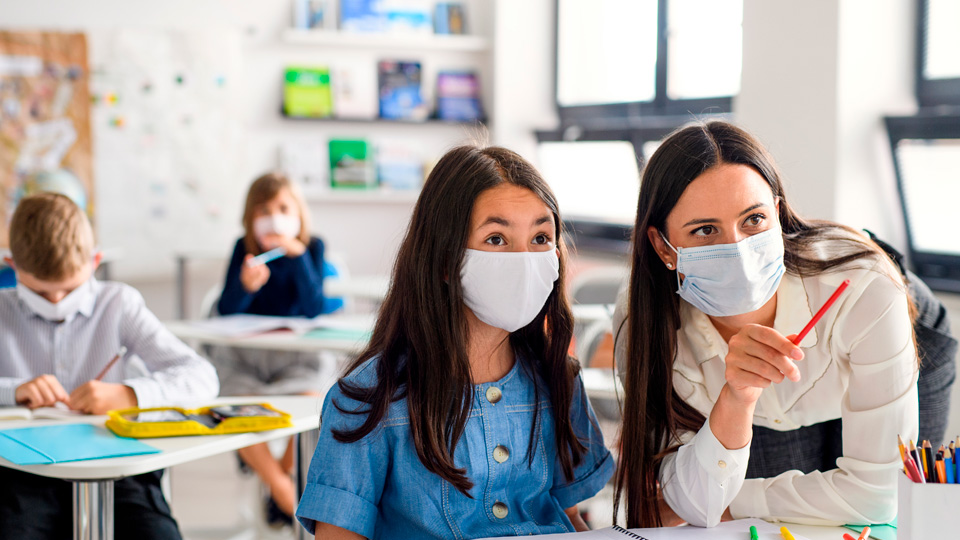Tear break-up test
13/01/2026

23/12/2021
An estimated 20% of the child population has a problem with their eyesight. This figure could continue to rise in the coming years due to the use of our near sight, caused particularly by electronic devices, which are increasingly present in our daily activities.
As a result, uncorrected visual problems are a common reason for not paying attention in class, delayed reading and writing and a dip in academic performance. Many students are branded as poor students when they are actually concealing an undiagnosed visual problem. According to recent data, around 30% of our learning disorders are derived from difficulties related to undiagnosed eye problems.
Visual maturation
Visual maturation requires a long learning process which starts at birth and culminates between the ages of 8 and 9. What we do not learn over the first years of our life will not be recuperated in adulthood. This is why, if there is an eye pathology, it is fundamental to get a diagnosis and treatment as early as possible, as beyond this stage it could be irreversible.
One of the most recurrent questions families ask us is when to take children for their first eye check-up. Dr Idoia Rodríguez Maiztegui, a paediatric ophthalmologist at the Barraquer Ophthalmology Centre, recommends that “after an initial assessment by a neonatologist or paediatrician at birth, a full eye examination by a specialist is recommended around the age of two, to assess the anterior and posterior segment of the eyeball, to detect possible refractive errors and to rule out a squint or lazy eye. If there is a family history of eye pathologies or a referral has been made by a paediatrician, then a check-up should be carried out as soon as possible. From this time, even if the child doesn't have any symptoms, annual check-ups are ideal up to the age of 8, the point at which visual learning ends. Subsequently, we can space out the check-ups, going biannually until we are of legal age."
Beyond frequent check-ups, Dr Rodríguez Maiztegui also recommends a series of general guidelines to ensure that children have good eye health and to reduce the possibilities of developing some pathologies: “Working in spaces with light, preferably natural, that are well ventilated; maintaining good posture and eye distance from your workbook; taking regular breaks; using night mode on screens and trying not to overuse electronic devices”.
The increased use in digital screens in recent years has had a negative impact on our visual health. According to Dr Rodríguez Maiztegui, the key to avoiding these negative effects is limiting their use: “We shouldn’t allow children under the age of 3 to use electronic devices. Children aged 3 to 6 should use them for one hour daily at most, while the maximum time for those aged 6 to 16 is two hours, including regular breaks”.
Diseases and eye problems
Of all the eye conditions that can affect children, refractive errors, whether its myopia, hypermetropia or astigmatism, are most common.
Other frequent problems among children include structural abnormalities of the eye, such as congenital cataracts, drooping eyelids, corneal opacities and squints. They can all cause, to a greater or lesser extent, a delay in visual maturation and, therefore, lazy eye.
The Barraquer Ophthalmology Centre's Foundation has written a guide to help care for children’s eye health. It lists a series of guidelines for detecting visual problems.
The main indications that should alert parents and teachers are blurred vision, constant blinking, rhythmic eye movements, stinging and frequent red eyes, the child moves very close to objects or is unable to read the blackboard, they tilt their head to focus their eyes or they’ve a tendency to deviate or blink one eye. These are all signs and symptoms that should be a reason to arrange a consultation with the ophthalmologist.
We chatted with our pediatric optometrist Susana Escalera, who sees about 30 children a day in her office. Her experience and skills are paramount to a successfult eye exam of these small patients, some of whom are still a baby. It seems like a simple task, but it is not.